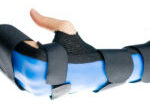Occupational and Physical Therapy Continuing Education Online
Filed under Uncategorized
Introduction: Why Continuing Education Matters in Therapy
In today’s fast-changing healthcare landscape, staying updated is no longer optional—it’s essential. For occupational therapists (OTs) and physical therapists (PTs), ongoing learning ensures the ability to deliver evidence-based treatments, meet licensure requirements, and keep up with innovative therapeutic techniques. That’s where occupational and physical therapy continuing education online comes into play, offering a flexible, affordable, and impactful way to sharpen skills without disrupting busy professional lives.

Understanding Continuing Education in Healthcare Professions
The Role of Continuing Education in Occupational Therapy
Occupational therapy is about helping patients live fuller, more independent lives. Continuing education courses keep OTs aligned with new tools, strategies, and research-backed interventions that improve patient outcomes.
The Role of Continuing Education in Physical Therapy
Physical therapy focuses heavily on mobility, recovery, and strength. Continuing education ensures PTs master the latest rehabilitation techniques, integrate new technologies, and adapt to updated clinical guidelines.
Benefits of Online Continuing Education for Therapists
Flexibility and Convenience
Unlike traditional workshops, online learning lets you study at your own pace. Whether you’re between patient sessions or at home after work, you can log in and continue where you left off.
Cost-Effectiveness
Travel, lodging, and missed workdays often make in-person conferences expensive. Online CE courses provide high-quality content without the extra expenses.
Access to Expert Instructors
Many online platforms partner with world-class educators and practitioners, giving learners access to specialized expertise that might not be available locally.
Opportunities for Career Advancement
From leadership roles to niche specializations, CE courses unlock new doors for therapists looking to expand their professional horizons.
Popular Topics in Occupational and Physical Therapy Online Courses
- Neurological Rehabilitation – Courses on stroke recovery, traumatic brain injury, and neuroplasticity.
- Pediatric Therapy – Innovative approaches for developmental disorders, sensory processing, and autism spectrum conditions.
- Geriatric Care – Fall prevention, mobility enhancement, and dementia care strategies.
- Orthopedic and Sports Therapy – Evidence-based programs for post-surgical rehab, athletic performance, and injury prevention.
- Mental Health and Wellness – Techniques to address anxiety, stress, and holistic patient care.
Accredited Platforms for Online Continuing Education
- American Occupational Therapy Association (AOTA) – Offers accredited OT-specific courses.
- American Physical Therapy Association (APTA) – Provides high-level PT continuing education resources.
- Hand Therapy Academy – Interactive, multimedia-rich learning tailored for healthcare professionals.
Choosing the Right Online Course: Key Factors to Consider
Accreditation and CEU Requirements
Every state has its own rules for continuing education units (CEUs). Before enrolling, check whether the provider is accredited by recognized bodies like AOTA or APTA to ensure your credits count toward license renewal.
Course Format and Learning Style
Some professionals thrive with interactive videos, while others prefer text-based modules. Consider whether the course offers flexibility, downloadable resources, or live webinars to match your learning style.
Instructor Expertise
Look for courses taught by instructors with both academic credentials and hands-on clinical experience. This balance guarantees both theory and practice are covered.
Peer Reviews and Testimonials
Other therapists’ experiences can shed light on the quality of the course. A quick scan of reviews may reveal strengths, weaknesses, or hidden gems in a program.
Balancing Work, Life, and Online Learning
Time Management Strategies for Busy Therapists
- Break lessons into 20–30 minute chunks.
- Schedule study sessions just like appointments with patients.
- Use a calendar app to track assignment deadlines and live webinars.
Building a Supportive Study Environment
A quiet workspace, good internet connection, and ergonomic setup can help you focus. Some therapists also join online study groups for accountability and motivation.
Technology and Tools for Effective Online Learning
Learning Management Systems (LMS)
Platforms like LearnDash and Moodle make it easy to track progress, complete quizzes, and revisit recorded lectures.
Interactive Video and Virtual Labs
Virtual labs simulate real-life clinical scenarios, allowing learners to apply theory in a practical, risk-free environment.
Mobile Learning Apps
Apps allow learners to study anytime, anywhere—even while commuting or between patient appointments.
Common Challenges in Online CE and How to Overcome Them
Staying Motivated
Without classroom interaction, some therapists lose momentum. Setting small goals and rewarding progress can help maintain consistency.
Managing Technical Issues
Reliable internet, updated browsers, and basic troubleshooting knowledge prevent disruptions during live sessions.
Avoiding Burnout
Balance is key. Schedule breaks, engage in hobbies, and avoid cramming long hours of study into one sitting.
Real-Life Success Stories of Therapists Advancing Their Careers
Many therapists have used online CE to specialize in new fields. For example, a physical therapist might transition into sports medicine, while an occupational therapist may move into pediatrics or mental health. These success stories prove that continuing education not only enhances skills but also opens unexpected doors.
Future Trends in Occupational and Physical Therapy Continuing Education
AI and Virtual Reality in Learning
Virtual reality is already making waves by simulating patient scenarios. AI-powered tools may soon customize learning paths for each student.
Global Collaboration and Networking
Online CE brings therapists worldwide into the same digital classrooms, fostering international collaboration and fresh perspectives.
Expanding Specializations
New specialties, such as telehealth therapy, are emerging. Online CE ensures therapists can pivot quickly to meet growing demand.
Frequently Asked Questions (FAQs)
1. Do online CEU courses count toward license renewal?
Yes, if the provider is accredited by bodies like AOTA or APTA, online CE credits are widely accepted.
2. How many CEUs do therapists need each year?
Requirements vary by state, but most therapists need between 20–30 CEUs per renewal cycle. Always check your local licensing board.
3. Are online courses as effective as in-person workshops?
Yes, when designed with interactive elements, online courses can be just as engaging and effective as traditional workshops.
4. Can I take CEU courses on my phone or tablet?
Most platforms offer mobile compatibility, allowing you to complete lessons on-the-go.
5. How do I choose between self-paced and live online courses?
Self-paced courses offer flexibility, while live sessions provide real-time interaction. Many therapists use a mix of both.
6. What happens if I don’t complete my CEUs in time?
Failure to complete CEU requirements may result in penalties or suspension of your license. It’s crucial to plan early and stay on track.
Conclusion: Investing in Your Professional Growth
Continuing education isn’t just a box to tick for license renewal—it’s an investment in your future and your patients’ well-being. With occupational and physical therapy continuing education online, therapists can stay current, specialize in new areas, and advance their careers—all while balancing work and life.
The digital shift in education has created more opportunities than ever. By choosing the right courses, managing time effectively, and embracing new learning technologies, therapists can shape a brighter future for both themselves and their patients.
More To Read
Flexor tendon rehabilitation in the 21st century: A systematic review
Neiduski, R. L. & Powell, R. K. (2019). Flexor tendon rehabilitation in the 21st century: A systematic review. Journal of Hand Therapy, 32, 165-174. The Skinny The objective of the study was to determine if there was evidence to support 1 type of exercise regimen. Exercise regimens reviewed include place and holds, early passive or…
Read MoreCarpal Fractures: A Brief Overview
Carpal fractures account for 8% of fractures in the upper extremity. The carpals are situated between the (distal radius and ulna) and the metacarpals. They make up the proximal row- Scaphoid, Lunate, Triquetrum, and Pisiform, the distal row- Trapezium, Trapezoid, Capitate, and Hamate. Here are some of the most common carpal bone fracture Scaphoid…
Read MoreOccupation Based Interventions in Hand Therapy
Keeping Occupation Based Interventions in Hand Therapy By: Tristany Hightower Are your treatments occupation based? Do you tailor your activity choices to fit the needs of each patient? As occupational therapists, we should be specialists in creating goals and interventions that are directed at returning our patients to meaningful occupations. Too often, hand therapy can…
Read MoreWhat? I just received an order for suture removal…
How many of us have practiced suture removal in occupational or physical therapy school?? NOT I!! Often, hand surgeons will ask the therapist to remove sutures and sometimes the order will even say “remove sutures when ready” SO NOW WHAT? How to remove continuous sutures? First, we can cover the basics of sutures! There are…
Read MoreSign-up to Get Updates Straight to Your Inbox!
Sign up with us and we will send you regular blog posts on everything hand therapy, notices every time we upload new videos and tutorials, along with handout, protocols, and other useful information.






